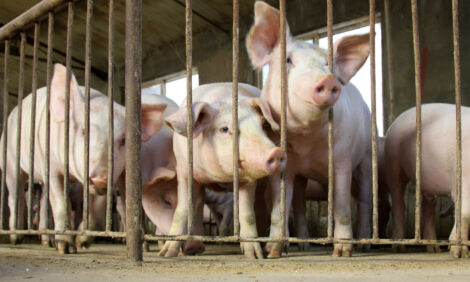USDA's February inventory survey contained no surprises
US - US Weekly Hog Outlook, 28th February 2003 - Weekly review of the US hog industry, written by Glen Grimes and Ron Plain.
|
Need a Product or service?
|
|

Ron Plain |
USDA's February inventory survey contained no surprises. January's pig crop was down 1.5% and the number of females bred was down 3.3%. The sow herd cutback is slowly continuing.
The demand for meat in 2002 turns out to have been a bit stronger than earlier estimated. The U.S. Department of Commerce has issued new estimates of the U.S. population and it turns out that there aren't quite as many of us as previously believed. Fewer Americans means that per capita consumption has been a bit higher than previously thought and thus meat demand stronger than earlier calculated.
Despite strong demand, increased pork production is holding prices down. The average retail price of pork in January was $2.582 per pound. That is 2.4 cents less than in December and 12.6 cents lower than in January 2002. The lower retail price takes money out of the pockets of both producers and processors/purveyors, but not evenly. The net farm value of a pound of retail pork in January was 60.8 cents, down 10.7 cents compared to January 2002. The farm to retail price spread in January was $1.974 per retail pound of pork, down 1.9 cents from 12 months earlier.
Although we may be able to tighten middlemen's margins a bit more, the best way to increase the farm value of pork (i.e. hog prices) is to push up the retail price of pork. There are two likely ways of doing that. The most obvious is to reduce the supply of pork on the market. USDA's December inventory survey implied that hog slaughter would be down in 2003. Unfortunately, this is yet to happen. Pork production during January was 2003 was 2.0% higher than in January 2002 and it looks like February pork production was 2.6% higher than last year.
The second way is to increase the price of competing meats. We are making better progress on this front. The average retail price of beef in January was $3.397 per pound, up 8.9 cents compared to 12 months before. The composite retail price of broilers was up 0.1 cents in January and the average retail price of turkey was up 4.4 cents compared to January 2002. USDA is projecting that the per capita supply of red meat and poultry will be down 5.6 pounds this year compared to 2002. If they are right, then the price of competing meats could well help push-up pork prices.
Live hog prices ended the week steady to $1 higher than the previous Friday. Peoria, Sioux Falls and Sioux Falls all had tops of $33.50/cwt on Friday. The interior Missouri market had a $32.50 top on Friday. The National weighted average carcass price Friday morning for negotiated hogs with 0.9-1.1" backfat, 6 sq. in. loins 2" deep was $45.82/cwt, $1.35 higher than last Friday. Regional prices on Friday morning were: eastern corn belt $44.87, western corn belt $45.46, and Iowa-Minnesota $45.40/cwt.
Pork product values were higher this week except for loins which had a tough time. At mid-day on Friday, 1/4-inch trim loins weighing less than 21 pounds were trading at 93.44 cents per pound, down 3.4? for the week. Boston butts gained half a cent for the week to 54.57 cents per pound at midday on Friday. Ham prices were seven and a half cents higher at 52.57 cents per pound for 17-20# hams. 12-14 pound pork bellies were 2 cents higher at 82 cents per pound.
Federally inspected hog slaughter for this week is 1.925 million head, up 4.3% from the same week last year. The cold weather is holding weights close to year ago levels.

















